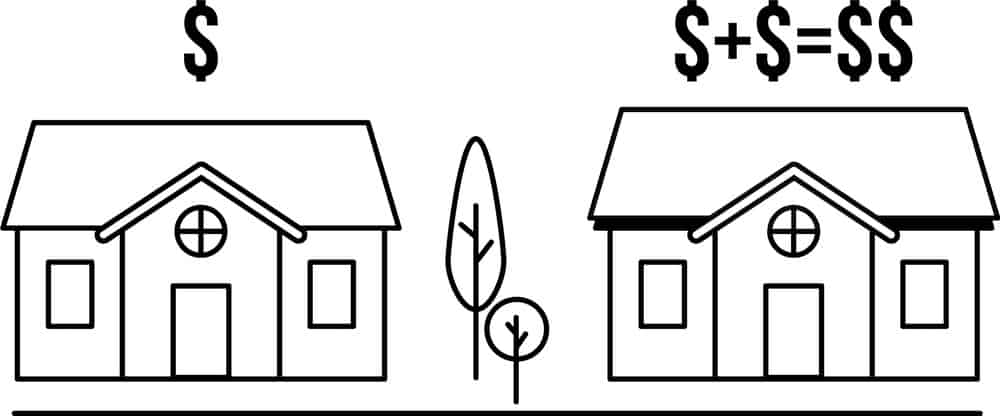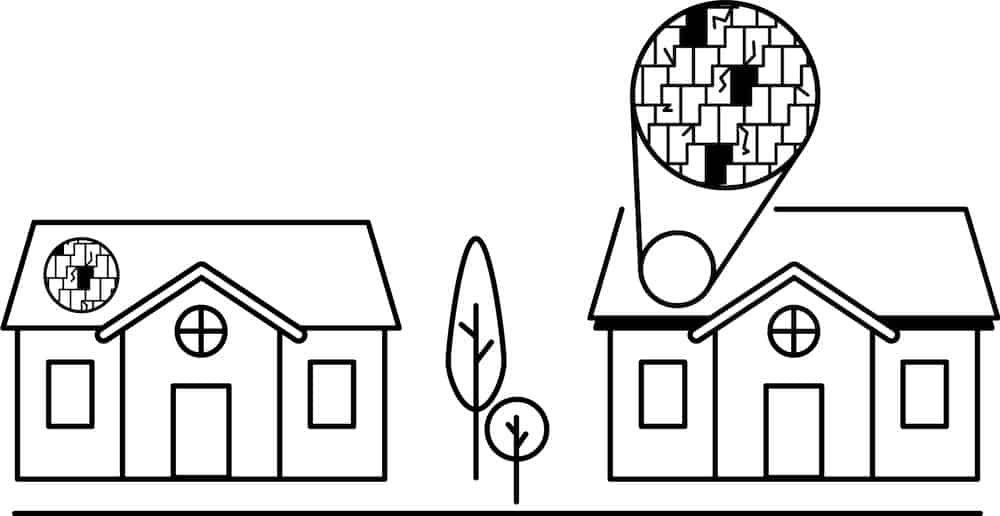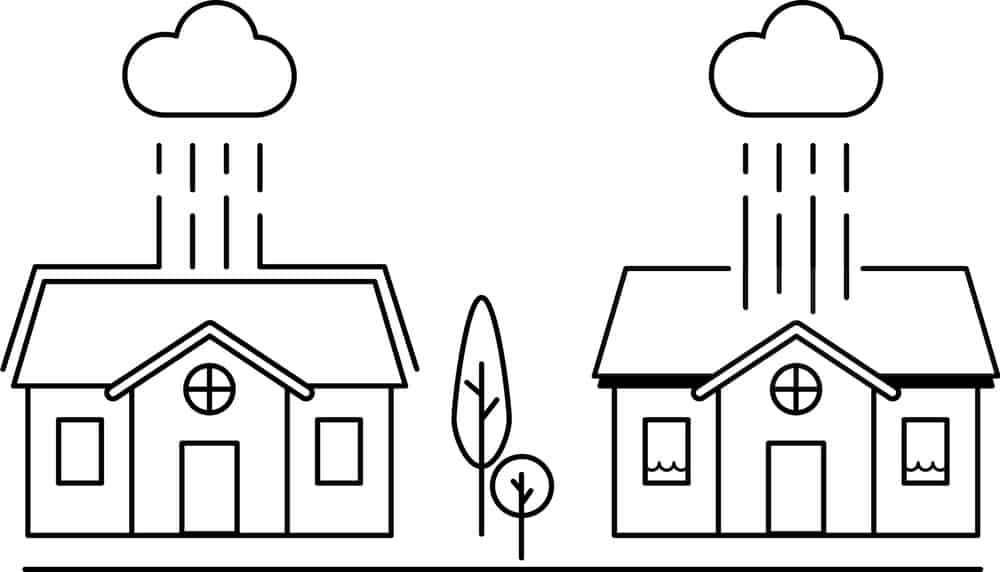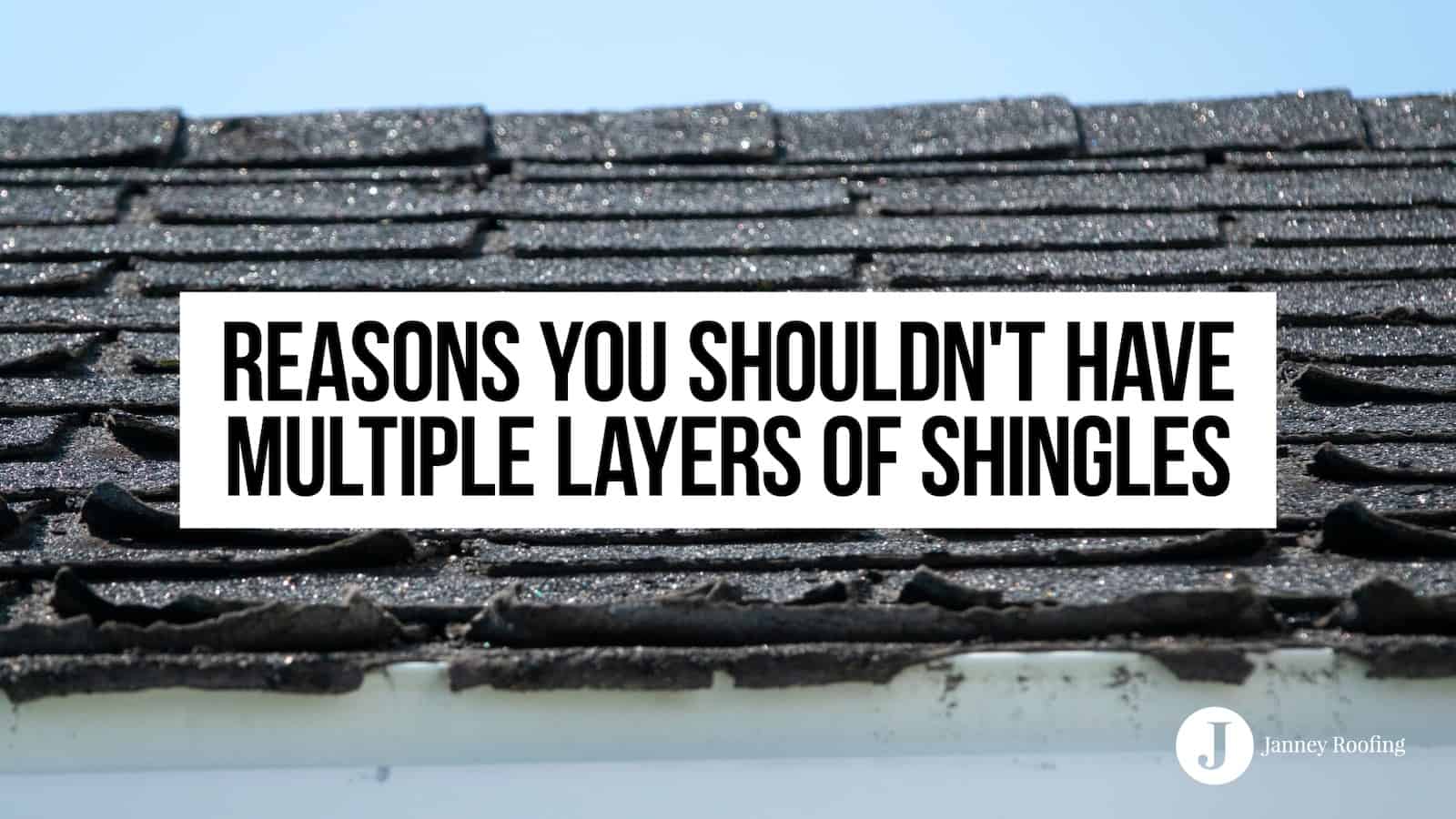“Just because you can, doesn’t mean you should” is a phrase you can apply to several situations in life, and choosing your roof repair techniques is one of them. For homeowners with roof damage isolated to one or several locations, it can be tempting to consider spot repairs in place of a roof replacement due to cost and convenience.
While opting for spot repairs like adding extra shingles might seem like a solution, it can also lead to its own set of problems down the line. Keep reading to find out why replacing your roof might be best in the long run.
Table of Contents
- It Doesn’t Look as Good
- It’s Not Always Possible
- It Can Increase Mold and Algae Growth
- It Isn’t Cheaper in the Long Run
- It Can Hide Signs of Actual Damage
- It Could Cause More Leaks
It Doesn’t Look as Good
Your home’s curb appeal is an important factor in its overall value, even if you don’t plan to put it on the market any time soon. Keeping that in mind, it’s important to understand that the second layer of shingles (also known as a layover) typically never lays flat or has the same overall appearance as your home’s original layer. This is because the existing shingles have undergone wear and tear and begin to curve over time. As a result, new shingles aren’t placed on a smooth, flat surface and aren’t affixed to your home as securely as a single layer. This means that your new, second layer of shingles will be more prone to wind and weather blow-offs and may reverse the quick-fix solution, leaving you back at square one.

It’s Not Always Possible
Not every roof is a candidate for a layover. While regulations in certain states can prevent you from installing a second layer of shingles on your home, there are practical considerations that make opting for a layover complicated. Your home’s original layer of shingles has its own ridged surface with gaps that prevent a layover from securely mounting to your roof’s surface and adds additional weight your home structurally was not designed to carry. These factors not only make the second layer of shingles more vulnerable to leaks and damage, but it also means you’ve at least doubled your roof’s weight!

It Can Increase Mold and Algae Growth
Even when installed well, the second layer of shingles becomes the perfect environment for algae and mold growth, which spreads quickly and can cause health problems. If your home’s first layer of shingles isn’t already mold or algae-free, a second layer will hold water while providing the shingles underneath with a dark, damp environment for mold or algae growth. If your home already shows signs of mold or algae growth (dark streaks running down your roof), a layover will only hide the problem, allowing it to grow and lead to more costly repairs down the line.

It Isn’t Cheaper in the Long Run
The possibility of saving money can be tempting when it comes to choosing the proper home renovation or repair technique. But, it’s essential to consider how money saved on the front end could lead to substantial repairs later. The potential risks that come with having more than one layer of shingles on a home can mean you may have to replace your entire roof in the future in addition to having to pay for the removal of the second layer of shingles. There’s a reason house inspectors make sure they report second layers of roofing to potential homebuyers. Even if you don’t plan on selling your home, the list of risks and the long-term impact an extra layer of shingles has on your home’s value could be a more giant headache than it’s worth.

It Can Hide Signs of Actual Damage
Diagnosing roof damage can be made even more difficult if you have two layers of shingles. The top layer of shingles can conceal damage that would have otherwise been easy to locate and repair. This makes diagnosis a longer process and more costly when both layers of shingles need to be removed to address the source of the issue.

It Could Cause More Leaks
While a quick and cheap fix may be tempting, it’s important to understand the potential issues the quick fix can cause. Generally, multiple layers of shingles trap extra heat in your roof and can speed up the wear and tear of the shingles, which makes your home susceptible to the elements and leaks. Another common issue to consider is that moisture often gets trapped between layers of shingles and can warp roofing materials that would have otherwise lasted much longer.

No one wants to deal with roof renovations or repairs, but making the right decision on the front end can save you money and frustration down the road. Before you consider the “cheapest” option, click the button below to reach out to Janney, expert Florida roofers, to receive a free quote in 48 hours in addition to expert guidance on the best decision for your home’s unique situation.

